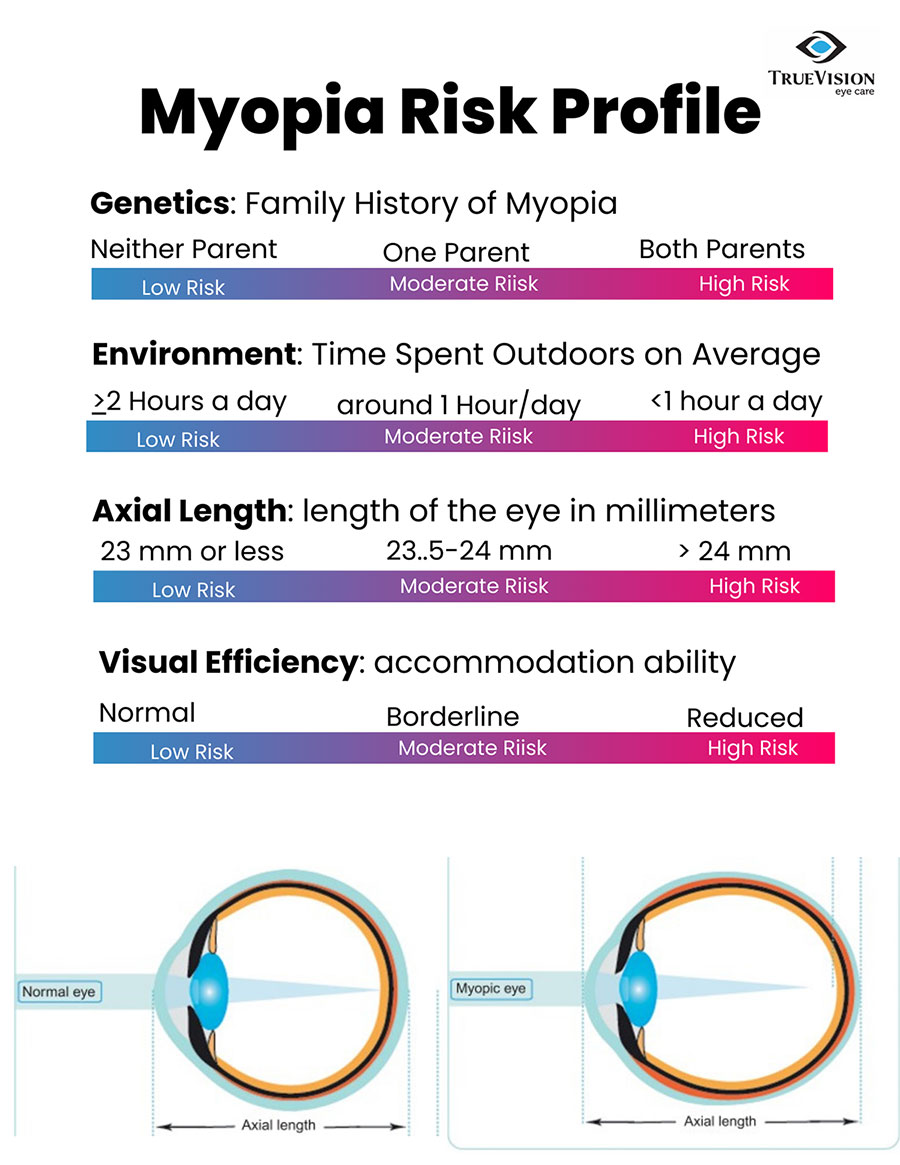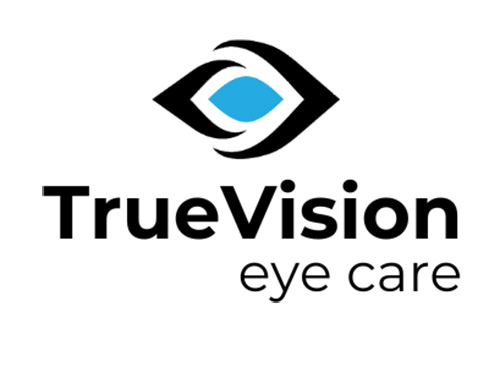Myopia Management
Myopia management in Morrisville & Raleigh, North Carolina is a treatment program designed to slow down myopia progression in children. Call our office to learn more!


Myopia Management
Myopia management in Morrisville & Raleigh, North Carolina is a treatment program designed to slow down myopia progression in children. Call our office to learn more!
Myopia Management, Morrisville & Raleigh, NC
At TrueVision Eye Care, we believe that it’s not ok to let a child’s vision get worse every year when there are scientifically proven and FDA-approved treatments to slow the progression of myopia (or nearsightedness). Around the world, myopia levels are skyrocketing due to our indoor lifestyles and heavy digital device use. The World Health Organization has declared this dramatic increase in vision disorders to be a worldwide epidemic, with over 50% of the world’s population predicted to be myopic by 2050.
Myopia in children
Children are especially at risk of worsening vision. As long as a child is growing, the eyeball can continue to lengthen every year causing higher and higher prescriptions to develop. This pathologic progression results in high adult prescriptions, but also an increased risk of damage to the eye due to a stretched and thinned retina, increasing the risk for potentially blinding conditions like retinal detachments, glaucoma, and macular disease.
Studies show that on average, school-age children between the ages of 7 and 18 experience worsening of their myopia prescription at a rate of -0.50 to -0.75D every single year. That means the average 7-year-old with a prescription of -1.00 would end up with a prescription of -6.00 by the time they graduated high school. Traditionally, doctors address myopia by prescribing glasses and contact lenses with stronger and stronger prescriptions each year as the eyes worsen, but our doctors embrace a newer and more modern approach to pediatric vision. Myopia management programs are individually prescribed to address each child’s particular risk factors for myopia progression, all supported by clinically proven and FDA-approved methods.


Is my child at risk for myopia?
Myopia (or nearsightedness) is caused by a combination of multiple factors, including genetics and the environment. Studies show that children are at increased risk if they have parents who are also myopic, spend less time outdoors, have a longer eyeball length (called axial length), and experience more eye strain while doing near work.
To reduce your child’s risk of developing myopia, you should encourage outdoor play for an average of two hours each day and schedule yearly pediatric eye exams where our doctors can assess their vision, their near focusing ability (called accommodation), and measure their axial length.
Myopia management options in Raleigh & Morrisville
Myopia management is a series of treatments that have been clinically proven to slow down the progression and worsening of myopia in children. Each myopia management treatment option works by slowing down the progressive elongation of the eye that results in worsening vision as a child ages. We understand that every child is different, and we offer several different treatment options that are customized to your child’s unique needs.
Myopia management treatment options may include:
Atropine eye drops
Atropine eye drops are FDA-approved for dilating pupils and are routinely used for in-office dilated eye exams and in the treatment of amblyopia (lazy eye) in pediatric patients. Studies found that compared to placebo control, children treated with 0.05% atropine nightly had approximately a 64.5% reduction in myopic progression rate. Atropine compounded to 0.05% had a negligible effect on dilating pupil size and no effect on near visual acuity in this study.
More about atropine eye drops
At this time, atropine is not FDA-approved specifically for myopia management, so these eye drops are not yet available from most commercial pharmacies. Our doctors work with local and mail-order compounding pharmacies if this is the treatment option you select after discussing all options with your doctor.
Children who use atropine drops will continue to wear their glasses and/or contact lenses during the day and use the drops once before bedtime each night. As a part of our myopia management program, our doctor will assess your child’s unique visual system and needs to determine the best concentration of atropine for success.
MiSight® multifocal contact lenses
In 2019, the FDA approved the first soft contact lens to slow down myopia progression. The MiSight® Daily Disposable soft contact lens was studied in myopic children over three years. Compared to children wearing single vision contact lenses, those wearing the soft multifocal lens had 59% less progression in prescription and 52% less advancement in axial length.
More about MiSight® multifocal contact lenses
MiSight® contact lenses offer the same comfort, breathability, and safety as any daily disposable contact lens, making them easy for even young children to wear. Inserting and removing contact lenses can be a concern for many parents, but our office specializes in training contact lens wearers of all ages. Around the world, children are successfully able to insert, remove, clean, and care for their contact lenses and enjoy clear vision!

Orthokeratology
The most studied and most popular method for slowing down myopia progression is orthokeratology (or ortho-k). Our office uses highly breathable orthokeratology lenses manufactured by Paragon Vision Sciences. Orthokeratology lenses work by gently molding the cornea’s shape overnight, like wearing a retainer to align your teeth. Once your child removes the orthokeratology lenses in the morning, their vision will have improved to the point that they don’t need glasses or will greatly reduce the need for them. The vision correction is only temporary, and your child must wear orthokeratology lenses every night to ensure the best results.
More about orthokeratology
Research shows that wearing ortho-k lenses can slow down myopia progression by 50-90% and decrease axial length elongation by 40-80% compared to using single-vision glasses. Wearing these lenses will not reverse myopia that has already developed, but they can greatly minimize the speed with which a child’s prescription increases if worn nightly during the years of typical myopic growth (usually through the early 20s). Orthokeratology is FDA-approved for treatment of myopia up to -6.00D of prescription in the United States.
Protecting your child’s eyes for a brighter future
As part of our myopia management program, our doctors carefully monitor your child’s axial length and prescription every six months (or more frequently depending on their unique case) to ensure efficacy of the prescribed therapy. New innovations are continuing to gain FDA approval in the field of myopia management, and our doctors are committed to offering the most modern and scientifically proven treatment options to ensure children have healthy eyes and clear vision not just today but for years to come. If your child has been diagnosed with myopia, contact us today at (919) 472-4070 (Morrisville) or (919) 629-9208 (Leesville) to schedule an appointment with our specialists.
